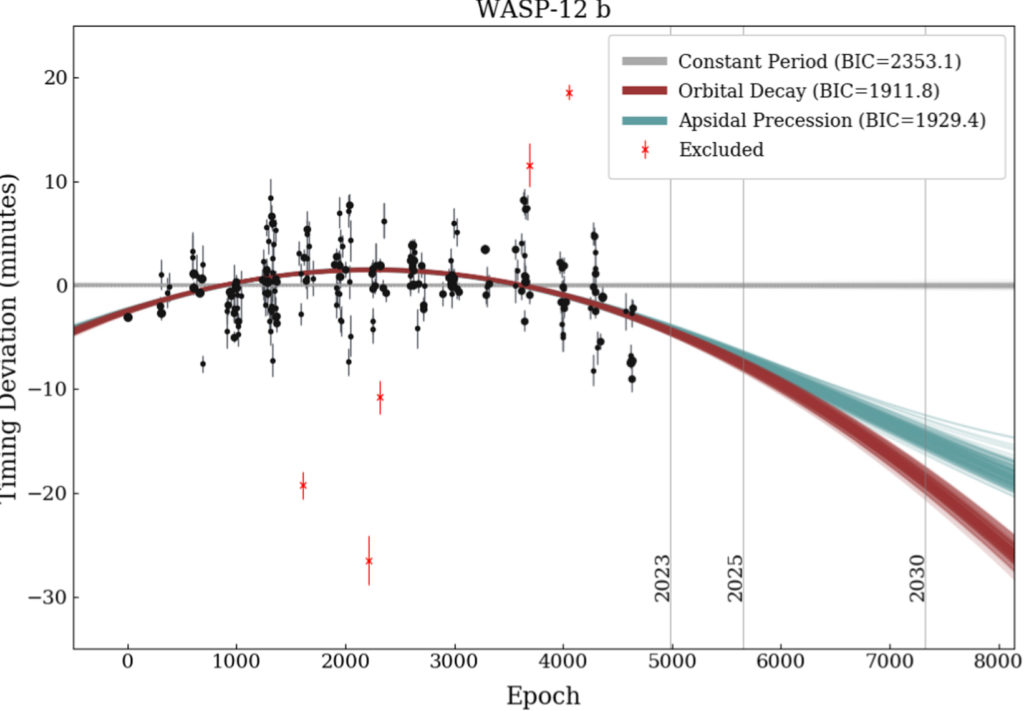Among different fields of science, astronomy has a unique history of citizen science projects. In the last few decades, the advent of user-friendly software and web infrastructure, as well as off-the-shelf research-grade instrumentation, has led to a golden age of citizen science astronomy. Opportunities for amateurs to contribute meaningfully to astronomical research have never been more plentiful.
Continue Readingexoplanets
All posts tagged exoplanets
From https://webbtelescope.org/resource-gallery/articles. (This is a slightly updated reprint of an article originally run Nov 2021.)

NASA’s James Webb Space Telescope (JWST), scheduled to launch on December 18, will primarily use its spectrographs – specialized instruments that capture and spread out light like a rainbow – to study exoplanets. By analyzing this data, known as spectra, researchers will be able to measure exoplanets’ compositions and chemistries. Spectra will help refine what we know about any exoplanet Webb observes, including massive gas giants, mid-sized ice giants, and smaller rocky exoplanets (some of which could be similar to Earth). In a few cases, JWST will deliver images of exoplanets to reveal more about them.
Continue ReadingEvidence of Long-term Period Variations in the Exoplanet Transit Database (ETD)
https://iopscience.iop.org/article/10.3847/1538-3881/ac959a


able 4. Model Comparison for Secondary Analysis—Data Variance for ETD Transit Times
| Target | Decay Rate | 1σ Unc. | BIClinear | BICdecay | ΔBIC |
|---|---|---|---|---|---|
| (ms yr−1) | (ms yr−1) | ||||
| WASP-12 b | −34.8 | 4.9 | 223.7 | 202.7 | −21.0 |
| HAT-P-19 b | −64 | 17 | 80.6 | 78.2 | −2.4 |
| TrES-1 b | −16.0 | 3.7 | 73.3 | 68.3 | −5.0 |
| WASP-4 b | −6.7 | 2.4 | 62.6 | 62.7 | 0.1 |
| TrES-2 b | −22.0 | 8.0 | 159.0 | 160.3 | 1.3 |
| TrES-5 b | −25 | 11 | 118.3 | 120.5 | 2.2 |
| HAT-P-32 b | −32 | 12 | 95.5 | 96.7 | 1.2 |
| WASP-10 b | −10.1 | 7.6 | 131.6 | 135.5 | 3.9 |
| WASP-43 b | 3.5 | 4.0 | 126.5 | 130.9 | 4.4 |
| TrES-3 b | 0.01 | 1.9 | 227.8 | 233.1 | 5.3 |

In 1986, superstars Lionel Richie and Michael Jackson won a Grammy for “Best Song of the Year” for “We are the World“, a single recorded to support the African charity USA for Africa (https://usaforafrica.org/) to provide food and relief aid to starving people in Africa, specifically Ethiopia where a famine raged. With sales in excess of 20 million copies, it is the eighth-bestselling physical single of all time, and it immediately generated 60 million dollars.
But 1986 also marked the 300th anniversary of one of the most popular science books of all time, Conversations on the Plurality of Worlds. And a NASA mission just over the horizon may turn the sci-fi conversations about alien life from this classic pop-sci book into science fact.
Continue ReadingWhite dwarf stars have been a mystery since they were first discovered. Extraordinarily hot and compact, the engima of white dwarfs was unraveled largely through the herculean efforts of the Harvard computers. Astronomers now know white dwarfs are the final stage of a violent aging process for Sun-like stars. And though astronomers originally expected such violence would spell doom for any planets in orbit, mounting discoveries show that some planets at least can survive this cataclysmic descent into stellar senescence. Whether any life survives on those planets is another matter.
Continue Reading
